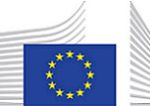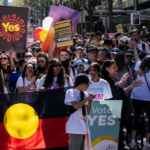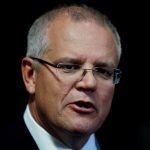Closing the gap: Success in higher education but still more work to be done
The yearly Closing the Gap report tracks how the Australian Government addresses Indigenous disadvantage. Professor Andrew Vann, Vice-Chancellor of CSU, explains how his university aims to incorporate Indigenous culture and knowledge in its learning.
Eight years on, the great commitment of governments across Australia to Close the Gap remains a cherished goal, but one that is yet to be achieved.
In a report of varied successes and failures, higher education has again proved to be one of the leading areas when it comes to closing the gap for Indigenous Australians, based on 2016 results released by the Prime Minister.
Results showed that universities have succeeded in increasing the number of Aboriginal and Torres Strait Islander students by 70 per cent over the past decade and that there is almost no employment gap between Indigenous and non-Indigenous university graduates. However, one of the six targets –to halve the overall gap in employment by 2018 – is not on track. This only serves to highlight just how important it is that we get even more Indigenous Australians into university.
We know that addressing disadvantage for Indigenous Australians is a long-term project, progress can be slow and advances difficult to maintain. We need stable government policy and programs to support pathways for Aboriginal and Torres Strait Islander peoples into education and professional life. Despite investment, good intentions and some positive results to date, serious disparities remain.
Universities are in the privileged position of being able to develop learning, teaching and support mechanisms that can make real improvements to the higher education outcomes for Indigenous Australians. The Government is seeking to modernise the Australian economy with a renewed focus on innovation and STEM. As universities, we must focus not only on enrolments and completions, but also on converting educational success into full time employment in this new economy.
The question now is how can we achieve this? It seems to me that in a contemporary university there is a critical need to nurture a sense of shared culture owned by all parties and to retain a sense of agency for Indigenous peoples. To echo the Prime Minister, we need to work ‘with and by’ Indigenous people, not do things ‘to and for’ them. In return, there are certainly things our universities, our people and our students can and should learn from Indigenous cultures.
At Charles Sturt University (CSU), we identified the crucial first step to improving Indigenous education outcomes as creating a genuinely culturally inclusive institution. This is also a long-term project but we strive to embrace Indigenous culture and embed it in our organisational DNA.
The Wiradjuri Elders gave CSU permission to use some of their language in our strategy document – what we call our narrative – to demonstrate what it means to be part of CSU on the lands of its traditional owners. ‘yindyamarra winhanganha’ means ‘the wisdom of respectfully knowing how to live well in a world worth living in’. We think this is an exceptionally fine elaboration of the university’s traditional motto ‘For the Public Good’, taken from the writings of our namesake, Charles Sturt.
Yindyamarra, which means to be respectful, to go slowly, to take care and to be humble in the face of the world, is a core concept for the Wiradjuri sense of being. Allied concepts can be found in many of the world’s philosophical traditions but for CSU this has a particular potency and authenticity given the University’s foundation on Wiradjuri land. We talk about ‘sharing learning in Wiradjuri Country’. This is not an approach that sees Indigenous knowledge structures as inferior to Western knowledge. We recognise that the Wiradjuri ways of knowing and being operated successfully for many, many thousands of years before European colonisation. We can be wiser, more rounded and better people for seeking to understand these perspectives and transcend the confines of our own cultural backgrounds.
Applying these ideas to course design, to Indigenous cultural competency training for our staff and to working with our communities are just the first steps in demonstrating the value we place on Indigenous culture and knowledge. There is a tendency to see ‘closing the gap’ from only one side. We are trying to transform ourselves, yes, to be more welcoming to Indigenous students and staff but also because we will be a better university for it. We need to close our own gap.
Our Indigenous Education Strategy has been in place since 2009, and we are pleased to now have one of the highest proportions of Indigenous students of any Australian university (2.8 per cent). According to the latest Federal Department of Education and Training data, CSU has 908 Indigenous students, the second highest number of enrolments of any Australian university. On 2014 data the University of Newcastle sits in the number one position with 914, although the positions were reversed in 2013 when CSU had slightly more.
More important than enrolment figures however, particularly in relation to the close the gap campaign’s ambition to improve employment outcomes, is the number of Indigenous students who are completing their courses with CSU. This figure, which in 2014 was 144 Indigenous graduates and which does clearly lead amongst Australian universities, indicates that students are getting the support and teaching they need to give them every reasonable opportunity to complete their studies.
Our School of Australian Indigenous Studies located on our Dubbo campus delivers Australian Indigenous programs of teaching and research across professional and general academic programs within the University and leads our engagement with Indigenous communities. We also have well-developed support networks for Indigenous students across our campuses through our Indigenous Student Services.
We are very proud that in 2015 the CSU Graduate Certificate in Wiradjuri Language, Culture and Heritage celebrated its first cohort of graduates. We are working with the Elders to support a living network of Wiradjuri minds, deepening Wiradjuri knowledge and revitalising the living language that nourishes Wiradjuri country, culture and communities. This course has become a key resource in sustaining a sense of identity for Wiradjuri nation building.
At the graduation last year it was noted that the course is a result of decades of partnership and work between staff at CSU and the Wiradjuri Elders and particularly the contribution of Dr Stan Grant whom we recognised with an Honorary Doctorate in 2013. As Vice-Chancellor, I have been privileged to get to know our Elders, to hear their stories and to try to absorb a little of their wisdom and experience. Their work inspires me and reminds me what we can achieve in partnership with our communities. This is why I feel so blessed to have the job that I do.
Educating the educators is another means for universities to help close the gap, particularly with the aim of improving primary and secondary education outcomes for Indigenous Australians. To help achieve this we are committed to sharing Indigenous cultural competency with our education students and last September, 24 Bachelor of Education students from CSU became the first pre-service teachers from an Australian university to complete the Healthy Culture, Healthy Country program.
Through our Faculty of Business and the Institute for Land, Water and Society we have focused on promoting Indigenous entrepreneurship as this has been identified as another positive influence on employment outcomes. CSU research even identified a new model of Indigenous business development that involves helping early start Indigenous businesses improve a range of business practices through in-depth skill development, mentoring and business network engagement.
The next area of focus for CSU’s Indigenous Education Strategy is building effective links with industry that ensure we are not only educating students but assisting in their path to employment. We have programs in development that will then lead to guaranteed jobs for Indigenous students upon completion.
While good progress is indeed being made in higher education to close the gap, no one would deny that there is still work to be done. Although we are proud of what has been achieved at CSU, we are a long way from parity with our regional demographic for Indigenous people and we still have so much more to do. We do need to celebrate progress and success, and there are now many excellent academic and professional role models amongst the Indigenous alumni of Australian universities.
However, we also need to recognise the long journey still to travel for all Indigenous Australians and to redouble our commitment to complete that journey.
Professor Andrew Vann is Vice-Chancellor and President of Charles Sturt University. He has held a number of board and community leadership roles, is a Fellow of the Australian Institute of Company Directors, a Fellow of the Australian Institute of Management, Associate Fellow of the Australian Rural Leadership Foundation and a Fellow of the Institute of Engineers Australia.













